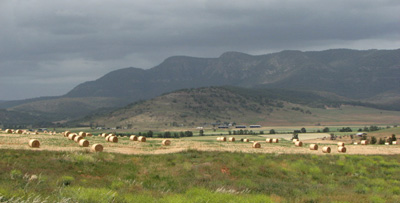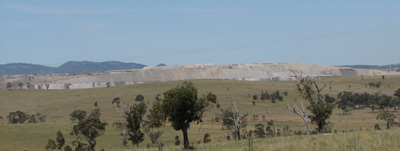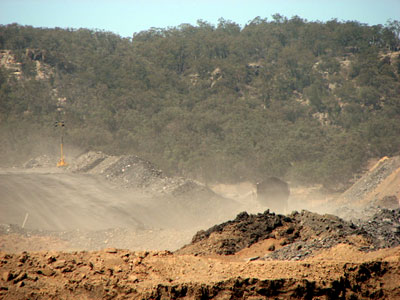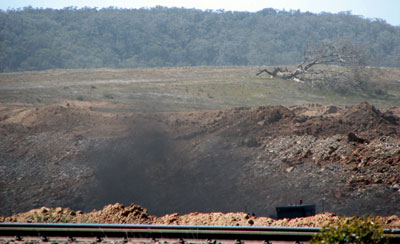
Driving through the Upper Hunter Valley lately, I was struck with the beauty of the few productive farming valleys still operating. They were alive with a variety of textures and colours, and although man-made, they fitted in with the natural beauty of the mountains beyond.
They were complementary because they were all living. The soil was doing what it was supposed to — growing plants, be they trees, grass, weeds or hay. It felt like part of the cycle of life.
This was in depressing contrast to many other places in the Hunter, where the light splotches in the landscape are not from hay or wheat, but from the artificial mountains of coal overburden, like these at the Bengalla mine near Muswellbrook, which at their edges, loom incredibly close above the actual town.

It was also in great contrast to where I’d been, just over the range in the Mudgee area, driving through other once-productive valleys condemned to mining, with the farms abandoned, houses, fences and sheds decaying, awaiting their fate — disembowelment.
The Wilpinjong mine near Wollar is only about 16 months old but it’s an ugly sight of dead country already. They’ve actually pumped dry the first set of bores they drilled, and are now drilling more and pumping from further afield. Very sustainable.


It is not near any main road or highway but is right beside the rural dirt roads along which people must still live. Pale dust from flying trucks and dumped overburdens, black coal dust from the working excavator, 24 hour noise — it was all gung-ho and who cares out there!
No doubt they would insist that ‘strict environmental guidelines’ are being complied with. The locals know better.